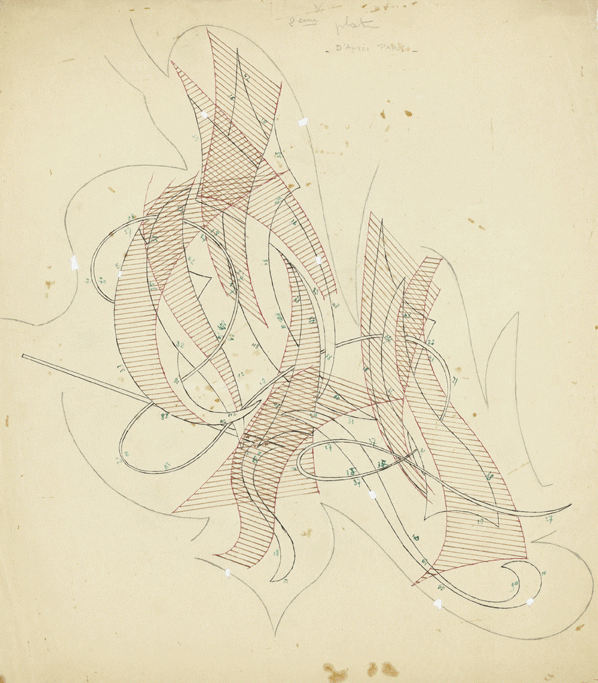With friends in town, parties every night, and the first nice weather in New York since last August, the opening of Frieze New York is generally defined by overindulgence. But seldom does the frenetic sprint from art fair to opening to dinner to party to opening grant the type of joy available at an exhibition of Paul Bonet. The show, featuring a selection of the late French bookbinder’s designs, curated by artist Florian Pumhösl, affords the absolute pleasure of looking, permitting special attention to all the little pernickety details of the binder’s craft.
There’s a few things about the history of books you need to know to make this exhibition a bit richer (I certainly didn’t know these things until my visit). First, by the 1920s, book collecting consisted of a special procedure: a patron purchased a paper manuscript, perhaps directly from the poet, and then enlisted the aid of a specialised bookbinder to create a unique, usually leatherbound cover. Bonet worked on volumes by Surrealist poet Guillaume Apollinaire and Paul Valéry, among others. They in turn appreciated his formal inventiveness, which veers between biomorphic patterns and industrial geometries: one sketch for example diagrams a cover for a Apollinaire’s concrete poetry collection Calligrammes (1918), and spells out each letter of the writer’s name using the full name itself. Pumhösl organised the exhibition having seen Bonet’s designs in French antiquarian bookshops, and pays homage to this environment through his creation of special display cases in which to show the work, my favourite of which collects the jacket designs for sheet music by Wagner, Liszt, Chopin and others. Another presents only book spines. There is a sense of self-conscious wackiness to Bonet’s design work, revelling in the perversity behind the fussiness.
Paul Bonet. Drawings for Bookbindings compiled by Florian Pumhösl is at Galerie Buchholz, New York, through 16 June
Online exclusive published on 5 May 2018
